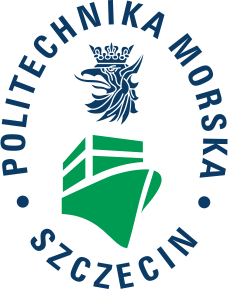Publikacje Kamil Pędziwiatr
Tytuł : Smart Sustainable Production and Distribution Network Model for City Multi-Floor Manufacturing Clusters
Autor/Autorzy: Tomasz Dudek, Tygran Dzhuguryan, Bogusz Wiśnicki, Kamil Pędziwiatr
Miejsce publikacji: Energies
Rok: 2022
Słowa kluczowe: city multi-floor manufacturing, production and distribution processes planning, smart supply chain, management, Hungarian algorithm, simplified decision model
Abstrakt: This study focuses on management ways within a city multi-floor manufacturing cluster (MFMC). The application of MFMC in megapolises is closely related to the problem of urban spatial development and the problem of matching transport and logistics services. The operation of the MFMC depends on the efficiency of production and transport management considering technical, economic, end environmental factors. Therefore, conditions affecting decision-making in the field of production planning by MFMCs and accompanying transports within the agglomeration area with the use of the production-service platform were presented. Assumptions were created for the decision model, allowing for the selection of partners within the MFMC to execute the production order. A simplified decision model using the Hungarian algorithm was proposed, which was verified with the use of test data. The model is universal for material flow analysis and is an assessments basis for smart sustainable supply chain decision-making and planning. Despite the narrowing of the scope of the analysis and the simplifications applied, the presented model using the Hungarian algorithm demonstrated its potential to solve the problem of partner selection for the execution of the contract by MFMC.
Adres strony internetowej (link) do pełnego tekstu
publikacji: https://www.mdpi.com/1996-1073/15/2/488
Tytuł : Reduction of the movement of individual vehicles in cities – a case study
Autor/Autorzy: Kamil Pędziwiatr, Katarzyna Sosik-Filipiak
Miejsce publikacji: Scientific Journals of the Maritime University of Szczecin-Zeszyty Naukowe Akademii Morskiej w Szczecinie
Rok: 2021
Słowa kluczowe: road traffic, individual transport, transport policy, restrictions of traffic, urbanization, urban transportation, sustainable urban development
Abstrakt: The aim of the article is to indicate the best practices used to limit individual transport in selected European cities. Due to the dynamically progressing urbanization processes and the related development of cities, the demand for transport services is increasing. Individual transport has become a significant problem, which contributes to the increase in road traffic in urban transport networks, causing congestion, which determines the increase in air pollution and noise emissions, road accidents and affects the health and quality of life of residents by limiting their mobility and transport accessibility . More and more often local authorities decide to implement traffic restrictions in cities, thus contributing to reducing the negative effects of transport. The methods of source analysis, descriptive analysis and the method of deduction were used to carry out the analysis. As indicated by the conducted analysis, the constant search for new solutions contributing to the reduction of transport problems is a challenge for city managers in the era of rapidly advancing urbanization processes. The implemented transport policy and the pace of implementing changes seem to be a key aspect in discouraging the society from using individual road vehicles in the city.
Adres strony internetowej (link) do pełnego tekstu
publikacji: https://repository.am.szczecin.pl/handle/123456789/2693
Tytuł : Safety and Use of Smart Driver Assistance Systems
Autor/Autorzy: Tomasz Dudek, Kamil Pędziwiatr
Miejsce publikacji: European Research Studies Journal
Rok: 2021
Słowa kluczowe: safety, smart driver assistance systems, active and passive safety system, innovative safety systems, Lane Keeping Assist Systems
Abstrakt: Purpose: The article discusses the safety systems implemented in road vehicles, their impact on the driving of a car by the driver as well as the related risks and problems. Design/Methodology/Approach: The proper study was focused in the field of smart driver assistance systems. The article uses the methods of source analysis, descriptive analysis and the method of deduction. Findings: The problem of accidents is not directly related to the safety systems used in vehicles, but can be solved by them. Vehicle-mounted solutions often save lives and reduce accidents. However, it should be remembered that they will not replace the driver in the decision-making process for now. Practical Implications: The results of this study can be used as a starting point for further analysis in the area of the safety systems implemented in road vehicles, their impact on the driving of a car by the driver as well as the related risks and problems. Originality/value: From mid-2022, all brand new cars entering the EU market will have to be equipped with advanced safety systems. The authors of the article focus on the question of how the use of smart driver assistance systems improves the safety of all road users.
Adres strony internetowej (link) do pełnego tekstu publikacji: https://www.ersj.eu/journal/2488
Tytuł: Innowacje w transporcie miejskim pasażerów uwzględniające potrzeby osób o ograniczonej mobilności na przykładzie miasta Berlin
Autor/Autorzy: Kamil Pędziwiatr, Joanna Kasińska
Miejsce publikacji: Studia Miejskie
Rok: 2017
Słowa kluczowe: transport miejski pasażerów, osoby o ograniczonej mobilności, innowacje w transporcie miejskim,
Abstrakt: W artykule skoncentrowano się na problemie niwelowania barier poprzez wdrażanie innowacji w transporcie miejskim pasażerów o ograniczonej mobilności, a więc niepełnosprawnych, ale także starszych, kobiet w ciąży, osób z małymi dziećmi, dużym bagażem czy też otyłych. Innowacje te służyć mają nie tylko zwykłemu zwiększaniu dostępności transportu miejskiego dla tych grup użytkowników, ale poszanowaniu ich praw człowieka do godnego życia. Praktyczne rozwiązania przedstawiono na przykładzie miasta Berlin, w którym średnio dziennie z usług transportu miejskiego korzysta aż 3,8 mln pasażerów, a co szósty z nich jest właśnie osobą o ograniczonej mobilności. Problem ten systematycznie zyskuje na znaczeniu między innymi w kontekście przyrostu demograficznego na świecie, choroby cywilizacyjnej, którą jest otyłość, a także z uwagi na proces starzenia się europejskich społeczeństw.
Adres strony internetowej (link) do pełnego tekstu publikacji:
http://www.studiamiejskie.uni.opole.pl/wp-content/uploads/2018/04/S_Miejskie_27_2017-Pedziwiatr.pdf


